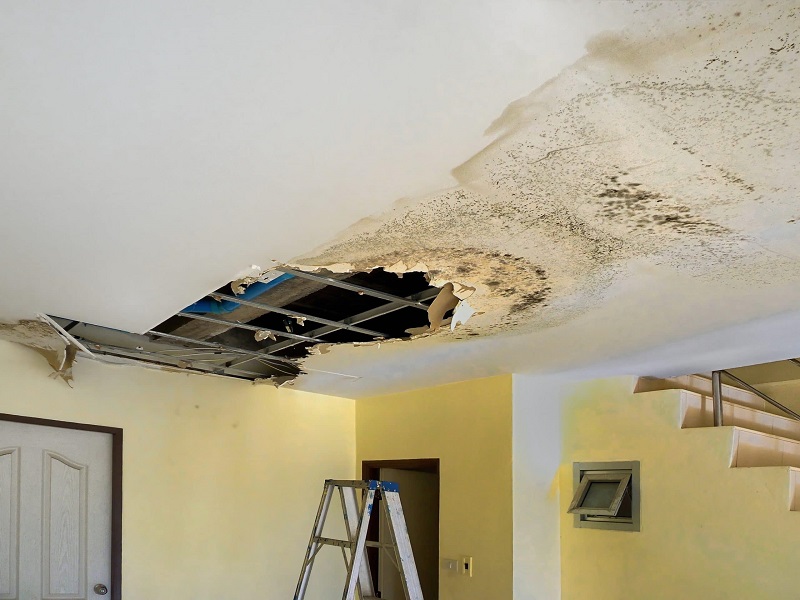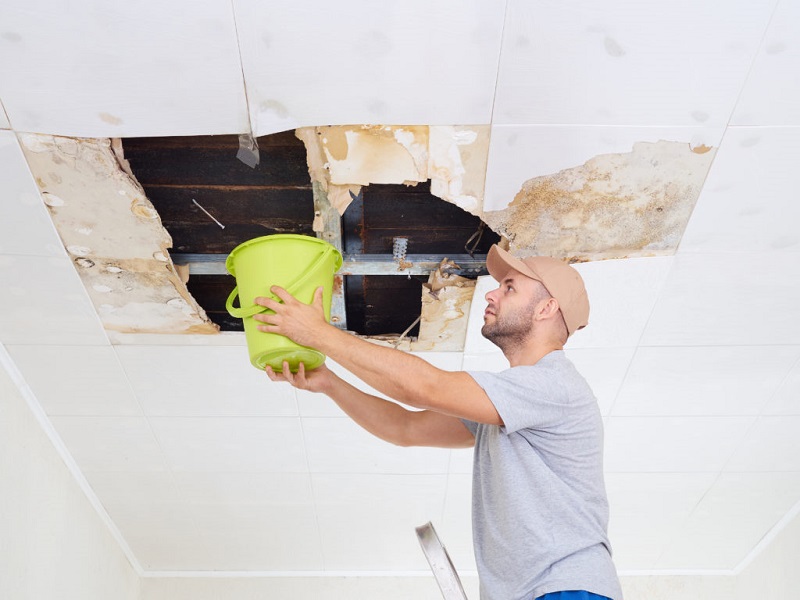So, you’ve discovered a leak in your roof, and the thought of climbing up there seems a bit too adventurous. Fear not! We’re diving into the world of fixing roof leaks from the inside. It’s time to put on your DIY superhero cape and tackle that drip head-on.
Locate the Leak: Sherlock Holmes Style
Finding the Culprit Grab a flashlight and channel your inner detective. Head to the attic or crawl space armed with your trusty light. Look for water stains, mold, or dampness. Follow the trail backward to identify where the leak is originating. Sherlock would be proud!
Gather Your Tools: The DIY Toolkit
Tools of the Trade Time to assemble your DIY toolkit. You’ll need a bucket (for the drips), a tarp or plastic sheet, roofing cement, a putty knife, and some nails. It’s like gearing up for a home improvement mission – and you’re the commander!
Temporary Fixes: Bucket Brigade
Contain the Chaos Place a bucket under the leak to catch the dripping water. It won’t fix the roof, but it buys you time until you can tackle the real issue. Think of it as the first aid kit for your leaky roof.
Tarp Time: Raincoat for Your Roof
Emergency Roof Fashion Unroll that tarp or plastic sheet and position it strategically over the leak. Use nails to secure it in place. It’s like giving your roof a raincoat – functional and stylish in a DIY kind of way.
Patching With Roofing Cement: DIY Bonding
Cement to the Rescue Now, let’s get down to business. Use your putty knife to apply roofing cement over the suspected leak area. It’s like giving your roof a little spa treatment – a protective layer against future leaks.
Insulate the Attic: Warm and Dry
Cozy Attic, Happy Roof Consider adding insulation to your attic. It helps regulate temperature and prevents condensation, reducing the likelihood of future leaks. It’s like wrapping your roof in a warm, dry blanket.
FAQs (Frequently Asked Questions)
Q: Can I use regular plastic instead of a tarp?
A: While plastic can provide temporary coverage, a tarp is more durable and better suited for the job. It’s worth the investment for a sturdier solution.
Q: How long can I rely on temporary fixes?
A: Temporary fixes are just that – temporary. They buy you time until a proper repair can be made. Don’t delay addressing the root cause of the leak.
Q: Is roofing cement a long-term solution?
A: Roofing cement can be a reliable fix for small leaks, but for extensive damage, it’s advisable to consult a professional for a more permanent solution.
Q: Will adding insulation stop future leaks?
A: Insulation helps regulate temperature and reduces condensation, contributing to a healthier roof. While it’s not a cure-all, it can certainly be a preventive measure.
Q: Can I fix a leak from the inside during heavy rain?
A: It’s challenging to work on roof repairs during heavy rain. It’s safer and more effective to wait for dry weather before attempting any fixes.
Conclusion
Fixing a leaking roof from the inside might not make you the next DIY reality star, but it’s a practical and achievable solution for many homeowners. Remember, safety first, and if the leak persists, it’s wise to consult a professional. Your roof will thank you for the TLC!





Average Rating